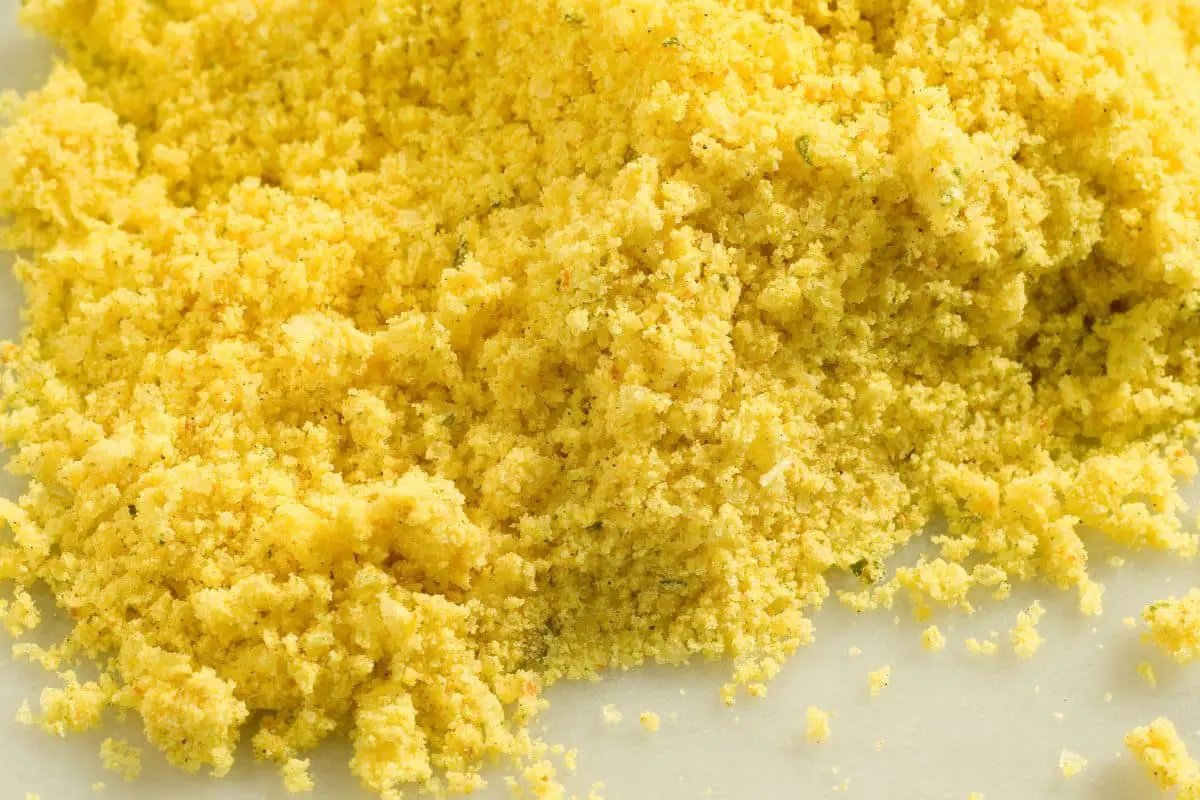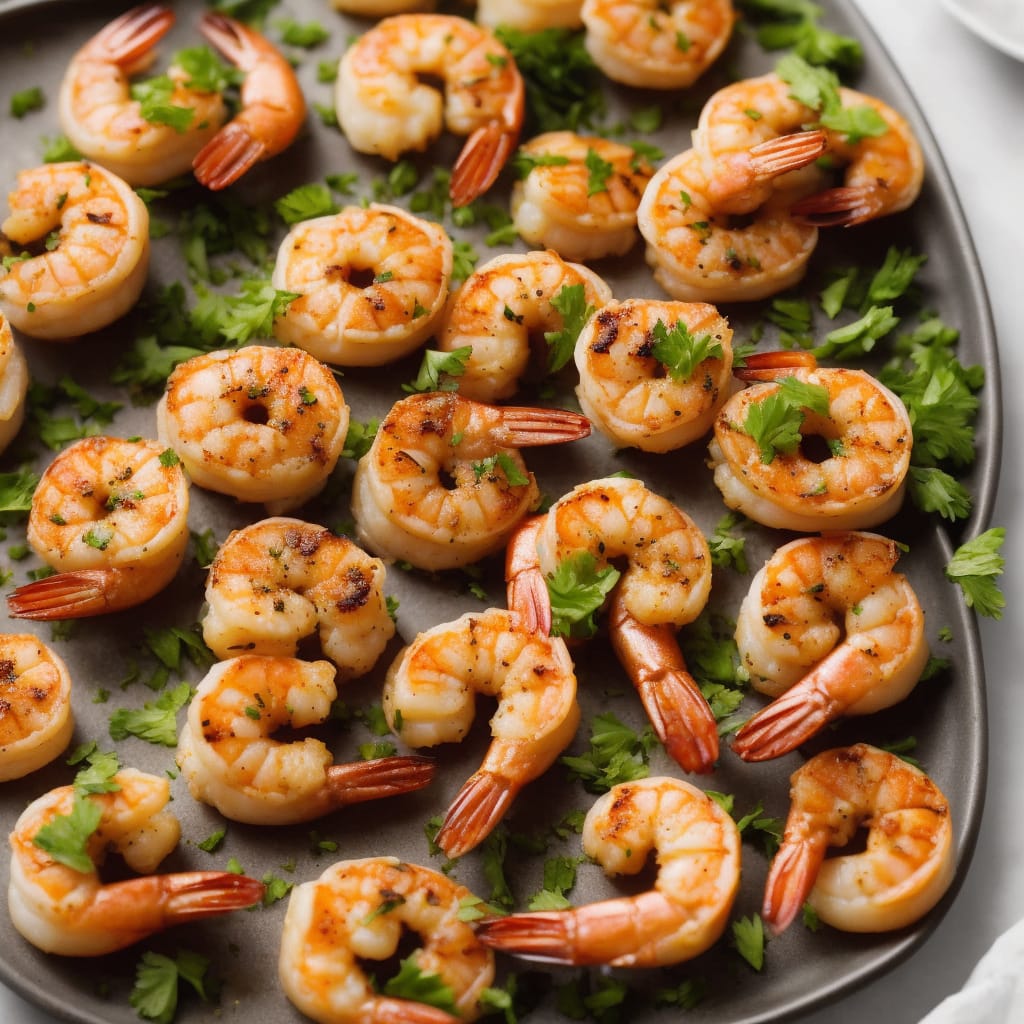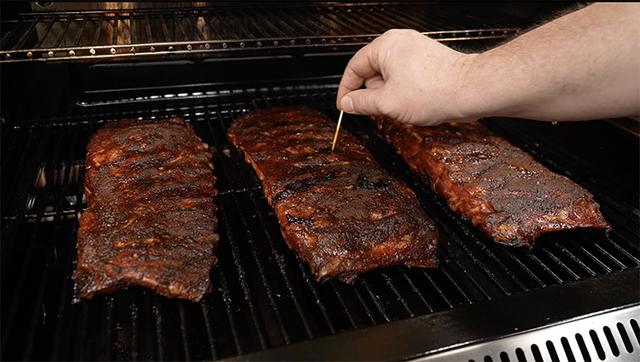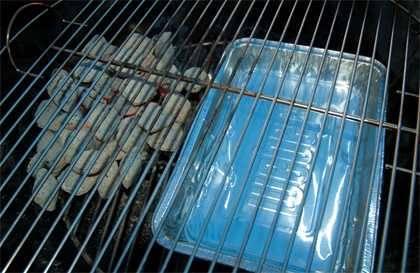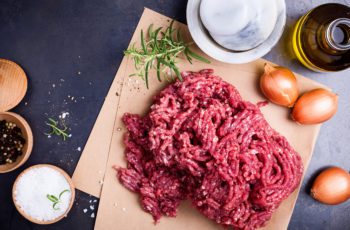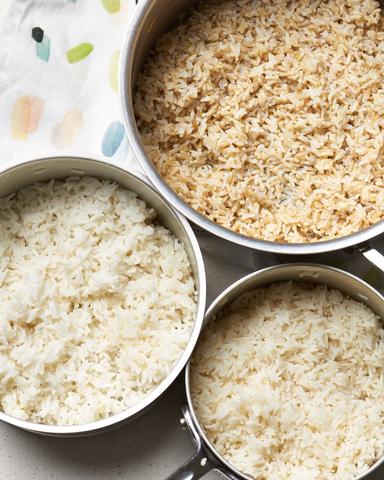
Discover the secret to perfectly cooked rice with our guide on how to tell when rice is done. Uncover foolproof techniques and practical tips that will help you achieve fluffy, tender grains every time. Say goodbye to undercooked or mushy rice and say hello to culinary success!
How to Know When Rice is Done? Here are the Signs

When cooking rice, it’s important to know when it is done to ensure that it has the right texture and taste. Here are some signs to look for:
1. Water absorption: One of the best ways to know if your rice is fully cooked is if most of the water has been absorbed into the rice. This means that the grains have soaked up the moisture and become soft.
2. Texture: Cooked rice should have a nice, soft texture. It should not be mushy or crunchy. The grains should be separate from each other, but still stick together in clumps.
3. Visual cues: You can also use visual cues to determine if your rice is done. If there is only a small amount of cooking water left in the pot after the allotted cooking time, then your rice might be done. On the other hand, if there is still a lot of water left, either it’s not done or you added too much water.
4. Taste test: The best way to know if your rice is fully cooked is by tasting it. If you can taste individual grains with each bite and they are tender with a slight bite, then your rice has been cooked perfectly.
5. Fork test: Another trick is to insert a fork into the cooked rice and lift it out slowly. The grains should separate easily and have a soft texture with a little resistance.
By using these signs together, you can ensure that your rice is cooked perfectly every time.
How Long Does It Take to Cook Rice?
Cooking time for rice can vary depending on the type of rice and the amount of water used. On average, it can take anywhere from 10 to 15 minutes to an hour or more. White rice, which has had its husk and bran layer removed, cooks faster than other grains and takes less time to cook. Brown rice, on the other hand, still has its bran and germ intact, which makes it take significantly longer to cook (40-50 minutes).
It’s important to follow the instructions on the packaging for each specific type of rice in terms of water measurement and cooking time. One way to visually check if the rice is cooked is by looking at how much water is left in the pot after the allotted cooking time. If there is almost no water left, then your rice might be done. However, it’s best to use a combination of signs such as texture, appearance, and taste to determine if your rice is cooked perfectly.
How Do You Know When Rice is Done?
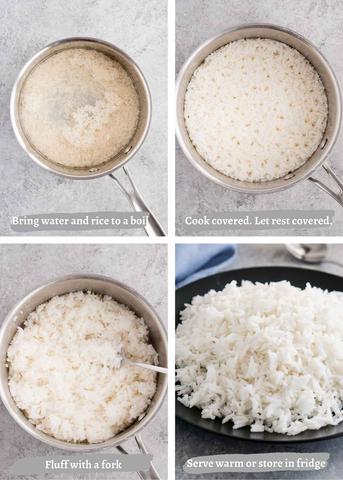
Knowing when rice is cooked to perfection can be determined by a few key indicators. Firstly, the majority of the water should have been absorbed into the rice, resulting in a soft and tender texture. Additionally, visually checking the pot for remaining cooking water can provide insight into the rice’s readiness. If there is minimal water left, it may be a sign that the rice is done. However, it is important to consider other factors such as taste and texture to ensure optimal cooking.
A visual test can also be conducted by examining the surface of the rice for bubble holes releasing steam. This indicates that the rice is almost done and it is time to turn off the heat and let it rest with the lid on. The ideal consistency of cooked rice should have a slight bite to it without being mushy or crunchy. Tasting individual grains can confirm if your rice has been cooked perfectly.
Absorption
Rice is a versatile ingredient that can be cooked in various ways, but one of the key factors to consider is the absorption of water. The cooking time and texture of rice depend on how much water it absorbs during the cooking process. It’s important to follow the instructions on the packaging for the correct water-to-rice ratio and cooking time. The goal is to have most of the water absorbed into the rice, resulting in a soft and tender texture.
The cooking time for rice varies depending on the type of rice and the amount of water used. White rice, which has had its husk and bran layer removed, cooks faster than brown rice that retains its bran and germ. White rice typically takes around 10-15 minutes to cook, while brown rice may require 40-50 minutes. It’s essential to read the instructions on the packaging to determine the appropriate cooking time for each type of rice.
While following instructions and measuring water accurately are crucial, visual signs can also indicate whether your rice is cooked properly. One sign to look for is how much cooking water remains in the pot after the allotted cooking time. If there’s almost no water left, it may indicate that your rice is done. However, if there’s still a significant amount of water present, it could mean that either more cooking time is needed or too much water was added initially.
The best way to determine if your rice is fully cooked is by checking its texture. Rice should have a slight bite to it without being mushy or crunchy. Individual grains should be separate from each other but still stick together slightly in clumps. To test this, you can taste a few grains with a fork or spoon after letting them cool down slightly. If there’s no remaining crunch and the grains are soft but still have a certain firmness on the outside, then your rice is likely cooked perfectly.
Appearance
When cooked properly, rice should have a nice, soft texture. The grains should be separate from each other, but not so much that they don’t stick together in clumps. Overcooked rice will look soft and the grains will clump together, losing their individual separation. If your rice is only slightly sticky, you can rinse it under cold water in a colander to help with the stickiness. However, if the stickiness is intense, it’s best to use that rice for softer recipes like rice pudding or fried rice.
A visual test can also help determine if your rice is cooked. Take a look at how much cooking water still remains in the pot after the allotted cooking time. If most of the water has been absorbed into the rice and there’s only a little left, then your rice might be done. However, if there’s still a significant amount of water left in the pot, either your rice is not fully cooked or you added too much water initially.
Rice that is almost done will have an interesting pattern of bubble holes at the surface. Each of these holes will be releasing steam. When you see this pattern, it’s time to turn off the heat and let the rice rest with the lid on for a few minutes to finish cooking.
Texture
Rice should have a nice, soft texture when it is fully cooked. The grains should be tender and easily separate from each other with a fork. When you take a bite of cooked rice, you should be able to taste the individual grains.
If the rice is overcooked, it will become soft and clumpy. The grains will stick together and lose their separation. However, if the rice is slightly sticky, you can rinse it under cold water in a colander to reduce the stickiness.
On the other hand, if the rice is undercooked, it will be crunchy and hard. It will lack the desired tenderness and may be difficult to chew. In this case, you can continue cooking the rice for a little longer or add more water if needed.
Taste
One of the best ways to determine if your rice is fully cooked is by tasting it. Take a few grains with a fork or spoon and let them cool before giving them a taste. You’re looking for rice with no remaining crunch. The grains should be soft on the inside, but still have a certain firmness on the outside. If the rice is mushy, then it’s overcooked and cannot be saved. On the other hand, if it’s still crunchy, that means it needs to cook a little longer.
In addition to taste, you can also check the consistency of your rice to determine if it’s cooked properly. The grains should be tender and easily separate with a fork. To test this, place your thumb in front of your index finger to make an L shape and insert into the cooked rice until you feel resistance. Lift out slowly – you don’t want clumps and mush. The ideal texture is soft with a little resistance.
After cooking your rice, it’s important to let it rest before serving. This resting phase allows the rice to steam to fluffy and moist perfection. It helps ensure that the grains remain firm without becoming mushy or too sticky. Simply keep the lid on your pot and remove it from the heat. Let it sit and steam for another 10-15 minutes before fluffing with a fork.
What to Do if your Rice Isn’t Fully Cooked
If you find that your rice isn’t fully cooked, don’t worry! There are a few things you can do to salvage it and ensure it’s fully cooked and ready to eat.
1. Add more water: If your rice is still crunchy or undercooked, try adding a little more water to the pot. Start by adding ¼ cup of water at a time and continue cooking until the rice reaches the desired texture. Make sure to cover the pot with a lid and cook on low to medium-low heat.
2. Increase cooking time: If your rice is almost done but still slightly undercooked, you may just need to increase the cooking time. Keep the pot covered and continue cooking on low heat until the rice is tender and fully cooked.
3. Let it rest: After cooking, let your rice rest off the heat with the lid on for an additional 10-15 minutes. This resting period allows the rice to steam and finish cooking, resulting in fluffy and perfectly cooked grains.
Remember, it’s important to taste-test your rice before serving it to ensure it’s fully cooked. If it’s still not up to par, you can always use undercooked rice for softer recipes like rice pudding or fried rice where a stickier texture is desirable.
Too Much Water
If there’s still a lot of water left in the pot after the allotted cooking time, then either your rice is not done or you added too much water. Overcooked rice will have a soft appearance and the grains will clump together. However, if it’s only slightly sticky, you can rinse it under cold water in a colander to reduce stickiness. If the stickiness is intense, consider using that rice for softer recipes like rice pudding, fried rice, or pancakes.
A visual test to determine if your rice is cooked properly is to look at how much water remains in the pot. If most of the water has been absorbed into the rice and there’s only a small amount left, then your rice might be done. However, this visual test alone is not enough to ensure perfectly cooked rice.
The best way to know if your rice is fully cooked is by tasting it. Pick up a few grains with a fork or spoon and let them cool before tasting. Cooked rice should have no remaining crunch and should be soft on the inside but still firm on the outside. If it’s mushy or overcooked, there’s nothing you can do to save it. On the other hand, if it’s still crunchy, it needs more cooking time.
Too Dry
If your rice is too dry, it means that you didn’t add enough water during the cooking process. You can gauge the intensity of the dryness by tasting a few grains. If it’s mildly dry, you can try adding another ¼ cup of water to the pot. If it’s extremely dry, you may need to add around a ½ cup of water.
After adding the water, put the lid back on and return the pot to low to medium-low heat. This is also a good moment to gently stir the rice so that the grains don’t stick together while they finish cooking. Keep in mind that letting too much water evaporate can lead to undercooked rice, so be careful not to overdo it.
Once you’ve added the necessary water and stirred gently, let your rice rest with the lid on for another 10-15 minutes. This resting phase ensures that your rice is steamed to fluffy and moist perfection. After resting, use a fork to fluff the rice and incorporate some air into the mix.
You forgot to rest
Resting your rice after it has finished cooking is an important step that many people forget. This resting phase allows the rice to steam and become fluffy and moist. It also helps the grains remain firm instead of becoming mushy. After removing the pot from the heat, keep the lid on and let it sit for another 10-15 minutes. Then, use a fork to fluff the rice, adding some air into the mix.
Rice contains cellulose, which our digestive systems are not designed to break down completely. Consuming undercooked rice can lead to discomfort and indigestion. It is important to ensure that your rice is cooked thoroughly to avoid these issues.
Undercooked rice may harbor a bacteria called Bacillus cereus, which can cause food poisoning. This can result in symptoms such as nausea, diarrhea, and vomiting. In severe cases, it can be life-threatening. To prevent bacterial contamination, make sure your rice is cooked properly before consuming.
Lectin is a type of protein found in some grains and vegetables. Cooking these foods breaks down lectin into digestible forms. Consuming undercooked lectin-containing foods can lead to symptoms similar to food poisoning in some individuals. It is crucial to cook these foods thoroughly to avoid any adverse reactions.
Is it Okay to Eat Undercooked Rice?
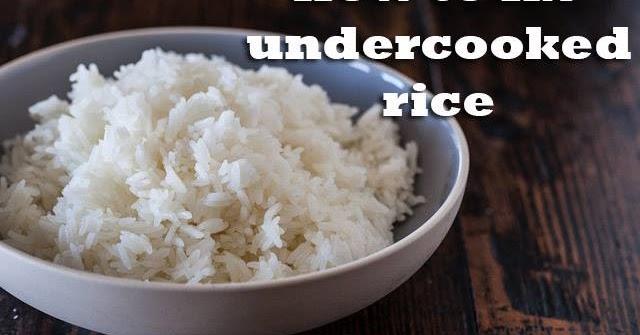
Eating undercooked rice is not recommended due to potential health risks. Undercooked rice may contain a bacterium called Bacillus cereus, which can cause food poisoning. Symptoms of food poisoning from this bacteria include nausea, diarrhea, and vomiting. In certain circumstances, it can even be life-threatening. Additionally, rice contains cellulose, a substance that our digestive systems are not designed to break down and digest properly. This can lead to indigestion and discomfort.
It is important to ensure that rice is cooked thoroughly before consuming it to avoid these potential health risks. Cooking rice until it has a soft texture with no hard spots and testing its consistency with your finger is the best way to determine if it is fully cooked and safe to eat.
Conclusion
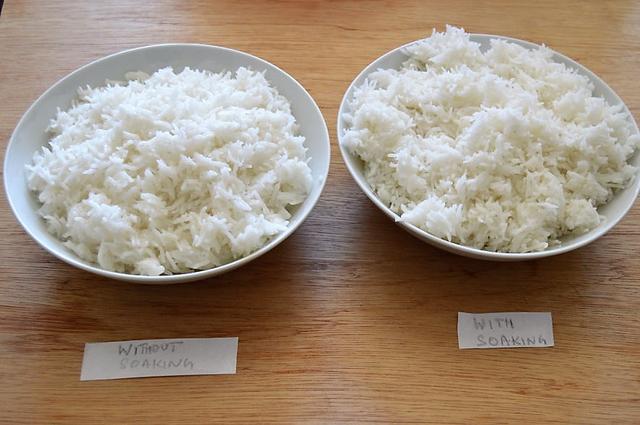
In conclusion, cooking rice to perfection requires attention to detail and a few key indicators. The best way to know if your rice is fully cooked is by checking for the absorption of water and a soft texture. Each type of rice has its own cooking time and water ratio, so it’s important to follow the instructions on the packaging. Overcooked rice can be salvaged by rinsing it under cold water or using it in recipes that require softer rice. On the other hand, undercooked rice can be fixed by adding more water and allowing it to cook for a little longer.
It is crucial to ensure that rice is cooked properly as undercooked rice may contain bacteria that can cause food poisoning. Additionally, indigestion may occur due to the presence of cellulose in uncooked rice. Therefore, it is essential to cook rice thoroughly to avoid any potential health risks. By following these guidelines and using taste tests and visual cues, you can confidently cook perfect rice every time.
In conclusion, determining when rice is done requires attention to cooking time, water absorption, and texture. Whether using the absorption or boiling method, following the suggested cooking times and checking for a tender yet slightly firm texture ensures perfectly cooked rice every time.
Learn More About Grilling
If you want to learn more about grilling, check out these other helpful resources!

